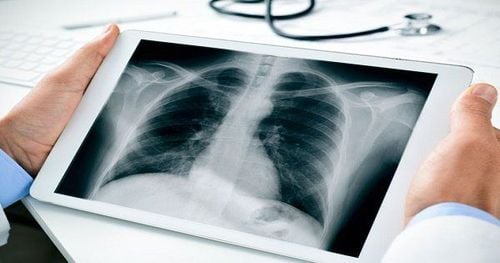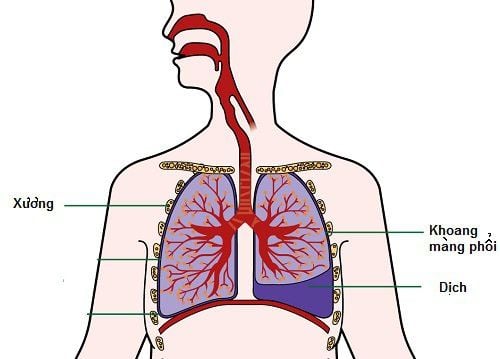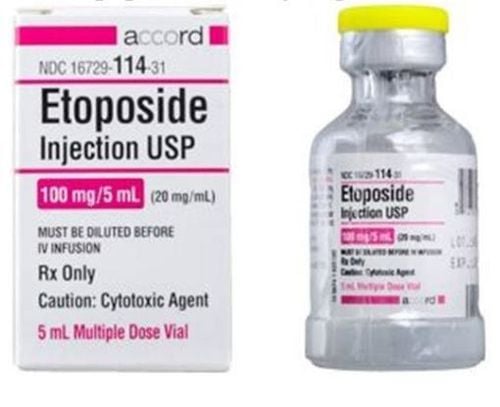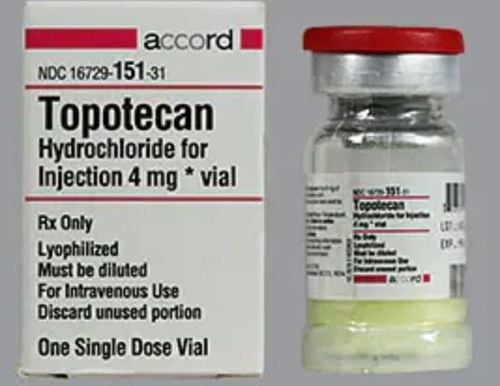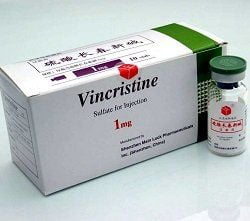This is an automatically translated article.
Small cell lung cancer is a malignant cancer and difficult to detect in its early stages. Chemotherapy is one of the treatment methods that help patients control the disease effectively and have the opportunity to prolong their life.
1. What is small cell lung cancer?
Small Cell Lung Cancer (SCLC) is a type of malignant lung cancer that occurs when cancer cells appear and grow abnormally in the lungs. Over time, these cells multiply and divide rapidly, to an uncontrollable level. Thereby forming a tumor and greatly affecting the function of the lungs. Even if cancer is not detected and treated in time, the tumor can spread to other parts of the body, making the course of the disease more serious and difficult to treat. In addition, the malignancy of this type of lung cancer is often much greater than that of non-small cell lung cancer (SNCLC- another type of lung cancer).2. What is chemotherapy for small cell lung cancer?
Chemotherapy for small cell lung cancer is a systemic treatment that uses anti-cancer drugs to attack and eliminate cancer cells in the lungs, while stopping their ability to grow and spread. them to other organs in the body.
Chemotherapy is often used in combination with other forms of treatment, such as radiation therapy or surgery. Patients with locally advanced small cell lung cancer may be required to have chemotherapy combined with radiation therapy. However, when the cancer is at an advanced stage, doctors often prescribe chemotherapy as the only treatment at this time.
3. When is chemotherapy for small cell lung cancer used?
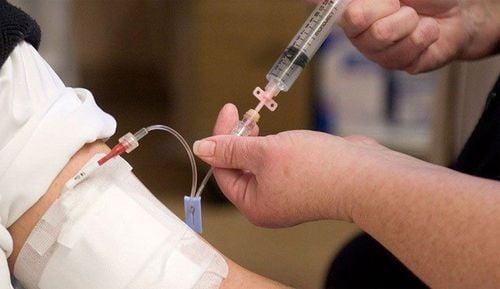
Hóa trị ung thư phổi tế bào nhỏ
Depending on the cancer status of each person, chemotherapy may be recommended in the following cases:
Before surgery (neo-adjuvant chemotherapy): the main purpose of chemotherapy Before surgery is to shrink the tumor, making it easier to remove them surgically. After surgery (adjuvant chemotherapy): chemotherapy is used to remove cancer cells that are left behind or that have spread to other sites but cannot be detected on imaging tests. For advanced stage NCLC: when small cell lung cancer is in an advanced stage, it means the cancer has spread to other parts of the body, such as the bones, liver, or adrenal glands. At that time, chemotherapy is given to control cancer cells, help shrink tumors and relieve painful symptoms caused by cancer. Chemotherapy at this time cannot completely cure cancer, but it is considered an essential therapy in the treatment regimen, helping patients improve their quality of life and prolong their life.
4. How is chemotherapy for small cell lung cancer given?
Chemotherapy drugs will be introduced into the body of cancer patients through two main routes, including:
Injection/intravenous (IV) route: the drug is injected directly into the vein, subcutaneous fat layer arm or leg, or injected into the muscles in the patient's hip area. Oral: Chemotherapy tablets or liquid form. Chemotherapy for small cell lung cancer is usually given in cycles. Each cycle will last for 3-4 weeks and the initial treatment regimen for patients is usually 4-6 cycles. After each treatment cycle, the patient will be rested for a certain period of time for the body to stabilize again before starting the next treatment cycle.
5. Chemotherapy drugs used
In chemotherapy, drugs to treat small cell lung cancer are often used in combination to improve the effectiveness of the treatment. Drugs that can be used in combination include:
Cisplatin and etoposide Cisplatin and irinotecan Carboplatin and etoposide Carboplatin and irinotecan
6. Side effects of chemotherapy for small cell lung cancer

Rụng tóc là biểu hiện thường gặp trong quá trình hóa trị ung thư phổi tế bào nhỏ
As mentioned above, chemotherapy is a systemic therapy, so it affects not only cancer cells but also other normal cells throughout the body. This can cause unwanted side effects for the patient.
One of the most dangerous symptoms that can occur during chemotherapy is a decrease in the number of white blood cells, platelets and red blood cells in the blood. This condition can appear as soon as 1-2 weeks after the patient is given the drug. When the amount of white blood cells in the blood is low, it leads to a high probability of infection, one of the life-threatening infections is pneumonia.
Some other side effects from chemotherapy include:
Fever Chills Body fatigue Nausea or vomiting Numbness and pain at the tips of the fingers or feet Hair loss Diarrhea Temporary hearing loss Time Mouth sores Poor diet Changed appetite Decreasing kidney function Most of these symptoms go away on their own after cancer treatment ends. However, in some patients, symptoms can persist and persist for years, even a lifetime. If the body has any of the symptoms listed above, the patient should immediately notify the doctor for timely control measures.
Detecting lung abnormalities early will increase the cure rate and prevent the disease from progressing to cancer. Therefore, performing regular lung cancer screening can detect abnormalities early. This helps in early detection and timely treatment to avoid unfortunate things happening.
Please dial HOTLINE for more information or register for an appointment HERE. Download MyVinmec app to make appointments faster and to manage your bookings easily.
Reference source: cancer.net




